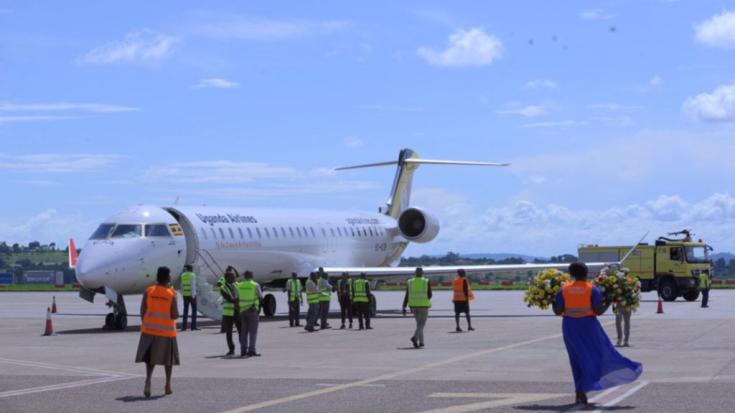Check also: The highlights of Uganda Budget 2015 / 2016 financial yr
The budget announcements are coordinated among most governments across the East African Community, [9]which comprises Kenya, Tanzania, Uganda, Rwanda, South Sudan and Burundi.
The financial year starts on July 1 across the region.
UGANDA
Details of the budget were outlined in a text of the speech to parliament by Ugandan Finance Minister Matia Kasaija.
On spending, he said: [3]“The total approved budget for the fiscal year 2016/17 is 26.361 trillion shillings ($7.90 billion). [4]Out of this, 18.41 trillion shillings is allocated for spending by ministries, departments, agencies and local governments.”
On budget deficit,[2] the minister said the fiscal deficit was estimated at 6.4 percent of gross domestic product in 2015/16. The text of the speech did not give a figure for the deficit for 2016/17.
On domestic borrowing, the minister said: “In financial year 2015/16,[1] it was projected that the budget would be partly financed by issuing Government securities worth 1.384 trillion shillings.
In the financial year 2016/17, government domestic borrowing will be significantly reduced and will amount to 612 billion shillings.
This is meant to provide more space for private sector credit growth.”
On external financing, he said: “Total external financing of the budget will amount to 6.52 trillion shillings in loans and grants,[5] equivalent to 24.8 per cent of the total budget. [9]This will comprise of 2.52 trillion shillings in concessional loans, 2.51 trillion shillings in non-concessional loans and 1.49 trillion shillings in grants.”
On economic growth, the minister said: “Uganda’s economy is projected to grow by 5.5 percent next financial year. Over the medium term,[15] GDP growth is projected to average 6.3 percent per annum.[1] This outlook is premised on the government commitment to fast track implementation of key public investments in infrastructure to facilitate private investment.”
On priority spending areas, the minister said: “Government will enhance productivity in primary growth sectors of the economy.[10] Primary growth sectors include agriculture, tourism, manufacturing and the mining sectors.”
RWANDA
Details of the budget were outlined in a speech to parliament by Finance Minister Claver Gatete.[5] On expenditure, the minister said overall expenditure would rise to 1.95 trillion francs ($2.60 billion) in 2016/17,[6] from 1.81 trillion francs in the year ending this June.
On revenues, he said: “Internal revenues will be 1.22 trillion francs equal to 62.4 per cent of the budget reflecting an increase of 40.9 billion. [4]External revenues are 733 billion francs reflecting an increase of 99.7 billion francs.”
On economic growth forecasts, [3]the minister reiterated a growth forecast of percent in 2016 and 2017 before rising to 7 percent growth in 2018.
On external financing,[5] the minister said: “Foreign aid is expected to be 365.3 billion francs equal to 18.7 per cent of the budget while the external loans of 367.7 billion francs equal to 18.9 per cent of the budget.”
“We are planning anticipating continuous decrease of donor funds and therefore we need to increase domestic resources,” the minister said.[8]
TANZANIA
Details of the budget were outlined in a speech to parliament read by Finance and Planning Minister Philip Mpango.[9] On the deficit, [2]the minister said the budget will have a gap of 4.5 percent of gross domestic product.[4]
On overall spending, [7]the minister said: “The government intends to raise 29.54 trillion shillings ($13.51 billion) to finance recurrent and development expenditures.[8] In view of this, the budget for 2016/17 is expected to increase by 7.04 trillion shillings, equivalent to 31.1 percent compared to the budget for 2015/16 of 22.49 trillion shillings.”
On borrowing, the minister said: “In order to finance the budget deficit, in the year 2016/17 the government intends to borrow 7.48 trillion shillings from domestic and external sources.[12] Out of this, 5.37 trillion shillings is expected to be raised from domestic sources for financing rolling over of maturing Treasury bills and bonds, including new loans for financing development projects and payment of verified claims.”[3]
On priority areas for 2016/17, the minister said:[1] “Major projects to be implemented include upgrading the central railway to standard gauge and port improvement.”
On economic growth forecasts,[10] the minister said: “Real gross domestic product is projected to grow by 7.2 percent in 2016 from real growth of 7.0 percent in 2015.”[2]
($1 = 3,335.0000 Ugandan shillings; $1 = 750.0000 Rwandan francs; $1 = 2,187.0000 Tanzanian shillings).[13]
Source: REUTERS
Check also;
- Uganda To Halt Military, Security Cooperation With North Korea
- Kenya Has Begun Building A $13 Billion Railway Project
- Top 9 Youngest And Promising Entrepreneurs In East Africa
Please use the button below to contribute to Newslex Point, Inc. using a credit card or via PayPal.

 Newslex Point News in Uganda, Uganda news
Newslex Point News in Uganda, Uganda news












